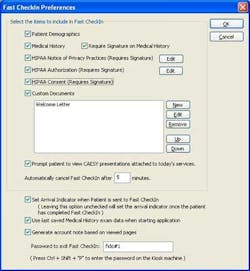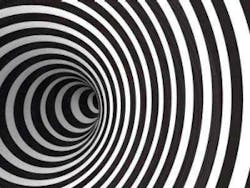Hypnosis or hypnotherapy for reducing anxiety in the dental office
By Jackie Foskett, RDH, BA, CH
Dental fear and dental anxiety are still quite prevalent among the general population, despite current pain relief measures and dental professionals’ awareness of the problem.(1) According to numerous Dental Fear Surveys (DFS), between 10% and 20% of adults in the United States avoid seeking regular dental treatment due to extreme dental fear.(2) Additionally, various dental fear assessments show that 45% of patients report having moderate dental fear while obtaining oral healthcare.(3) The problems associated with dental anxiety and fear impact not only the oral health and treatment of a large percentage of the population, they can impact the dental clinician’s ability to adequately treat his or her patients.(3) Dental anxiety, fear, and phobia are all related terms, yet distinctive. They are often used interchangeably, especially by patients. All of these states produce similar physiologic and cognitive responses in the body. Dental fear is described as a reaction to a known danger, stimulus, or an immediate threat. This uncomfortable reaction can be mental, emotional, or physical.(4) This threat may produce such physiologic changes as tachycardia, profuse perspiration, and hyperventilation, along with numerous other physical, mental, and emotional states associated with the “fight or flight” syndrome, or stress response. Dental anxiety, on the other hand, is a nonspecific ambiguous feeling of unease. It is anticipatory in nature, as there is no immediate threat and the source of the future threat is unknown. The dentally anxious patient will feel apprehensive, have negative thoughts, and imagine that negative experiences will occur about an upcoming dental appointment.(5) The major distinction between dental fear and dental anxiety is the immediacy of the threat or stimulus.Significant fear, to the degree of being excessive, irrational, and persistent in response to either the presence of the threat or stimulus or the anticipation of that threat, is dental phobia. What distinguishes a true dentally phobic patient from the anxious or fearful patient is how intense the fear of the threat is. A dental phobic patient will avoid the situation. This is the patient who does not seek regular oral healthcare and is generally only seen for emergency visits. A patient with dental phobia who does present in the dental office will be extremely fearful and exhibit poor coping skills. This perpetuates a negative cycle of imprinting the phobia further in the patient’s mind. Referral to a mental health professional may likely be needed in order to proceed with any further dental care.(6)
Hypnotherapy, using hypnosis, is an effective means to help reduce and/or relieve anxiety for patients that present with any variation of dental fear.(7) Hypnosis is a natural, super-focused state of mind. It has been described as being an inner ultra-focused alert state in which the cognitive mind is less active and more relaxed. As the analytical logical mind is more relaxed, it allows the individual to be more open to suggestions.
During this state, the mind is focused on the suggestions given for comfort and ease. The subconscious mind can much more easily accept these suggestions now that the conscious guarded mind is more relaxed. Also, the subconscious mind, where fears reside, is accessed in this relaxed trance state. A qualified hypnotherapist can facilitate the release of those fears while instilling the patient with new beneficial behaviors and thought patterns which will aid in controlling anxiety.(7,8, 9,10,11,12)Practicing formal hypnosis requires specialized training, yet other tools such as guided relaxation and/or guided imagery, can be learned easily by the hygienist and provide enormous benefit for the patient and practitioner as well. When a patient is in a more relaxed state and uses his or her mind in focusing on pleasant imagery or how the body is feeling being relaxed, he or she is essentially in a focused state of mind.(13) Therefore, it is prudent for the hygienist to be aware of choosing words that help the patient have a positive experience. Referral to a qualified certified hypnotherapist is appropriate when the scope of the level of fear/anxiety or phobia is beyond guided relaxation and guided imagery techniques in the dental office.References
1. Armfield JM, Stewart JF, and Spencer JA. The vicious cycle of dental fear: exploring the interplay between oral health, service utilization and dental fear. BMC Oral Health 2007, 7:1 doi:10.1186/1472-6831-7-1. 2. Heaton L J, Carlson C R, Smith T A, Baer R A, de Leeuw R. Predicting anxiety during dental treatment using patients'self-reports: Less is more. J Am Dent Assoc 2007 138: 188-195. 3. Binkley C J, Beacham A, Neace W, Gregg R G, Liem E B, Sessler D I. Genetic Variations Associated With Red Hair Color and Fear of Dental Pain, Anxiety Regarding Dental Care and Avoidance of Dental Care. J Am Dent Assoc 2009 140: 896-905.4. Milgrom P, Kleinknecht R, Weinstein P, and Getz T. (1985). Treating Fearful Dental Patients: A Patient Management Handbook. Seattle, WA: Behavioral Dental Publications.5. Kamin, Vara (2006). Fear, Stess, and the Well Dental Office. Journal of the Minnesota Dental Association, Vol 85, number 2, March-April 2006. www.mndental.org/archive/3_06/features/article_1/ accessed 4/12/11.6. Moore R, Bordsgaard I, Rosenberg N. The Contribution of embarrassment to phobic dental anxiety: a qualitative research study. BMC Psychiatry, 2004, 4 -10. doi:10.1186/1471-244X-4-10.7. Fross G. Handbook of Hypnotic Techniques, with Special Reference to Dentistry. Revised and updated. Carter B. 1988 Free Press; Tampa, Florida.8. Grindler J and Bandler R. Trance-Formations Neuro-Linguistic Programming and the Structure of Hypnosis. 1981, Real People Press, Utah.9. Hadley J and Staudacher C. Hypnosis for Change. 1996. MJF Books, New York.10. GSC Home Study Courses: 567: Hypnosis in Dentistry-Implications and Risks 2006.11. Elman D. Hypnotherapy. 1983. Westwood Publishing, California.12. Alladin A. Hypnotherapy Explained. Radcliffe Publishing Ltd, United Kingdom, 2008.13. Naparstek, B. Staying Well with Guided Imagery. Grand Central Publishing, New York 1994.
1. Armfield JM, Stewart JF, and Spencer JA. The vicious cycle of dental fear: exploring the interplay between oral health, service utilization and dental fear. BMC Oral Health 2007, 7:1 doi:10.1186/1472-6831-7-1. 2. Heaton L J, Carlson C R, Smith T A, Baer R A, de Leeuw R. Predicting anxiety during dental treatment using patients'self-reports: Less is more. J Am Dent Assoc 2007 138: 188-195. 3. Binkley C J, Beacham A, Neace W, Gregg R G, Liem E B, Sessler D I. Genetic Variations Associated With Red Hair Color and Fear of Dental Pain, Anxiety Regarding Dental Care and Avoidance of Dental Care. J Am Dent Assoc 2009 140: 896-905.4. Milgrom P, Kleinknecht R, Weinstein P, and Getz T. (1985). Treating Fearful Dental Patients: A Patient Management Handbook. Seattle, WA: Behavioral Dental Publications.5. Kamin, Vara (2006). Fear, Stess, and the Well Dental Office. Journal of the Minnesota Dental Association, Vol 85, number 2, March-April 2006. www.mndental.org/archive/3_06/features/article_1/ accessed 4/12/11.6. Moore R, Bordsgaard I, Rosenberg N. The Contribution of embarrassment to phobic dental anxiety: a qualitative research study. BMC Psychiatry, 2004, 4 -10. doi:10.1186/1471-244X-4-10.7. Fross G. Handbook of Hypnotic Techniques, with Special Reference to Dentistry. Revised and updated. Carter B. 1988 Free Press; Tampa, Florida.8. Grindler J and Bandler R. Trance-Formations Neuro-Linguistic Programming and the Structure of Hypnosis. 1981, Real People Press, Utah.9. Hadley J and Staudacher C. Hypnosis for Change. 1996. MJF Books, New York.10. GSC Home Study Courses: 567: Hypnosis in Dentistry-Implications and Risks 2006.11. Elman D. Hypnotherapy. 1983. Westwood Publishing, California.12. Alladin A. Hypnotherapy Explained. Radcliffe Publishing Ltd, United Kingdom, 2008.13. Naparstek, B. Staying Well with Guided Imagery. Grand Central Publishing, New York 1994.
Jackie Foskett, RDH, BA, CH, is a Certified Hypnotherapist and owner of Healing Hypnotherapy in Seattle, Wash. For more information, visit www.healinghypnotherapy.com.




